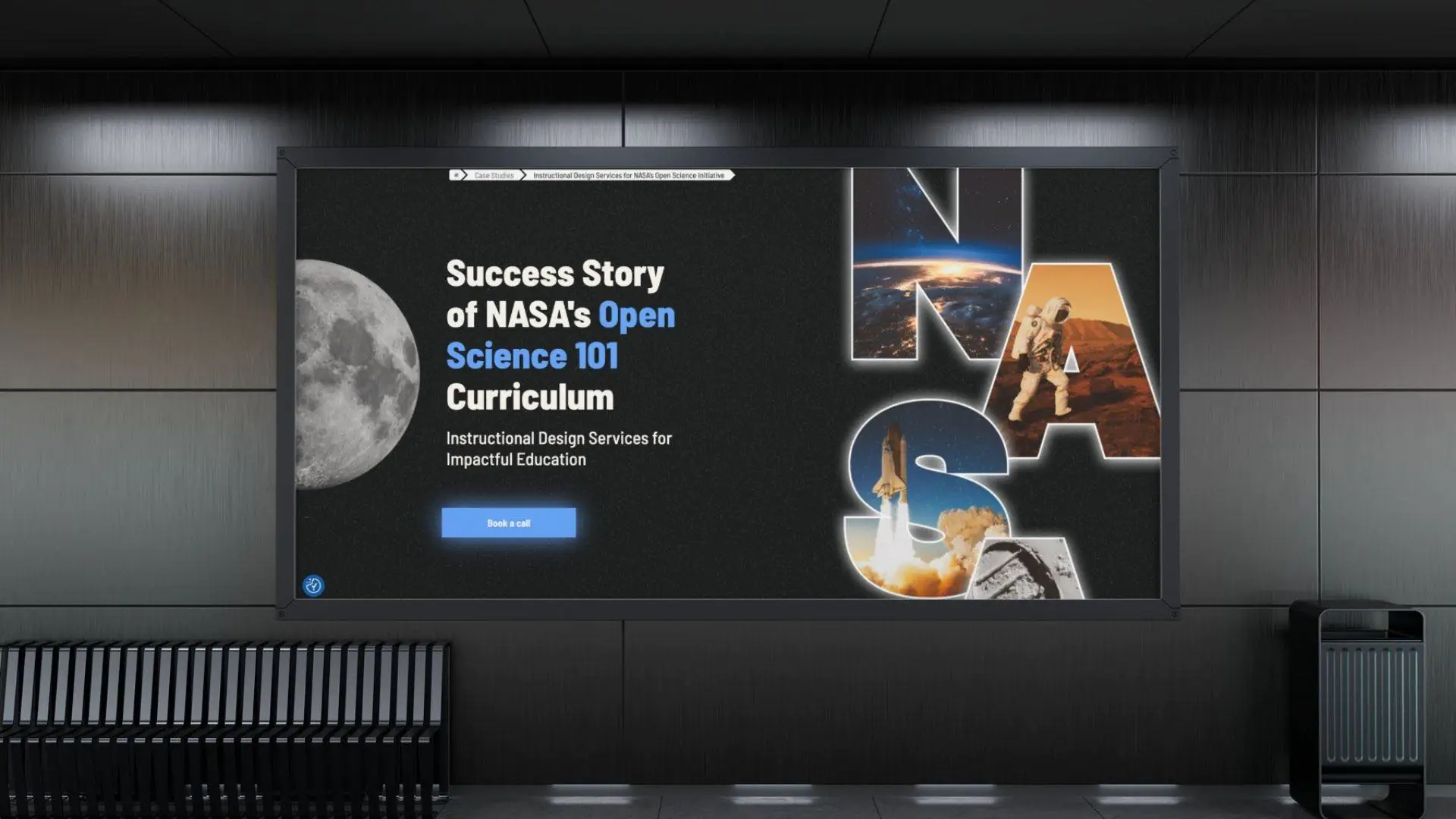Crafting a high-impact online course curriculum starts with clearly defined learning objectives and a logical sequence that guides students from foundational concepts to real-world application. Knowing how to create an online course curriculum will help you avoid situations where learners lose track of what they’re supposed to achieve. After all, an online course often fails not because of poor content, but because of poor structure.
Whether you’re building courses for corporate training or higher ed, you need to lay the right foundation for your online course from the very beginning so that, in the end, you can count on high completion rates from your learners.
If you want to create an online course curriculum without making common mistakes, we suggest familiarizing yourself with our detailed plan below. Just keep reading.
Article outline:
- Why is a strong course curriculum critical for online learning success?
- What does “online course curriculum” actually mean?
- How can a well-designed course curriculum improve learner engagement and results?
- What are the essential steps to create an online course curriculum?
What Is an Online Course Curriculum?
Essentially, an online course curriculum outlines what a student will learn, how the learning material is organized, and what intermediate and final outcomes they should achieve upon completion.
To make it easier to understand, think of Kevin McCallister’s map. On it, he marked each of his Wet Bandit traps — from the slippery stairs at the entrance to the rope crossing to the treehouse.
Similar to Kevin’s map, a well-thought-out curriculum for an online course includes defined learning objectives, a list of supporting materials, assessments, and a clear flow from one topic to the next.
So, your goal as an educator, when thinking about course design, is to answer the following questions:
- What should a learner know and be able to do by the end of the course?
- How should the content be structured to avoid overloading the learner?
- Does the assessment truly evaluate what the learner was taught?
- Is each module a logical continuation of the previous one?
“A well-planned online course curriculum also saves time during updates. When your course has a clear framework, you can easily add, remove, or improve parts without starting over.” – Raccoon Gang’s Corporate Training Specialist.
Why a Well-Designed Online Course Curriculum Matters
By offering learners a clear and logical sequence to your online course curriculum, you reduce confusion and frustration.
A good course curriculum design keeps learners focused on course objectives and makes it easier to track progress. As a result, engagement goes up, and more learners complete the course modules.
“Notably, a study analyzing 221 MOOCs found that completion rates varied significantly, with structured courses achieving rates up to 52.1%, compared to a median of 12.6% across all courses.” – Research Gate.
To illustrate, let’s look at a comparative table of the differences between poorly vs. well-structured course curricula.
| Poorly Structured Curriculum | Well-Structured Online Course Curriculum |
| Random topics with no clear order | Logical flow from basic to advanced topics |
| No stated learning objectives | Clear objectives at the start of each module |
| Assessments not aligned with content | Assessments that match the skills taught |
| Overloaded modules with too much information | Balanced modules with focused learning goals |
Steps to Create an Online Course Curriculum
Now that you’re aware of your potential educational goals, you’re in a great position to start building an online course curriculum that is sure to work for your learners. Here are some steps to develop a solid curriculum:
Define learning outcomes
Before buying a ticket, you always need to choose a destination first. Therefore, defining learning outcomes is your starting point.
Only clear outcomes help you avoid overloading your course with content that doesn’t mean anything in the context of the course.
Examples of Learning Outcomes:
- Identify common cybersecurity threats in a corporate environment
- Apply basic Excel formulas to analyze data
- Explain the key principles of instructional design
- Outline the steps in the software development lifecycle
- Interpret financial reports for small business decision-making
- Design a simple landing page using HTML and CSS
Short on bandwidth? Work with instructional design consultants specializing in curriculum development.
Set a timeframe
It takes time to design a quality course curriculum. To plan, design, and build an online course curriculum, you need to dedicate uninterrupted time to the process. Thus, you will need to set realistic goals and deadlines for yourself.
When establishing a timeline, you should also consider the time it will take to deliver the course. If it’s an ongoing course with a series of online sessions, determine the time that has to be allocated to each session.
Plan the course structure (modules and lessons)
What distinguishes a course created by professionals from one built on intuition? The answer is a good course structure.
Breaking the course into learning modules and lessons — and placing them in a logical sequence from basic ideas to more complex ones — forms the foundation of a strong structure.
This approach lies at the heart of such a concept as instructional design.
Gather teaching materials and resources
Collect all the resources you have, including the training materials and eLearning content you have researched and previously prepared materials. It will be a part of the process – course content planning. Organize all content in order of relevance and importance, so that you can easily access it when required.
You may be tempted to skip this step, but organizing the resources and materials can save you a lot of time when the time comes to use them for creating your curriculum.
The material might include syllabi from related college courses, textbooks, notes, worksheets, quizzes, assignments, exams, articles, online educational resources, etc. Simple course lessons or curriculum templates can easily get you started.
Plan for assessments
At this stage, it’s important to define how you’re going to evaluate learners in your online course curriculum. You can use quizzes between lessons, embed questions into scenarios or stories, and include a final test at the end of the course.
Using assessment strategies at the right points supports the course flow and reinforces key learning moments without interrupting progress.
Focus on engagement and interactivity
Educational and useful doesn’t have to mean boring — especially now, when the average attention span is just 8 seconds. Use different engagement strategies such as quizzes, short videos, simulations, or quick polls to break up the material and keep learners involved.
But remember, engagement doesn’t mean entertainment. Student-centered learning means active learning. The more engaged learners are, the better they retain the material.
For this purpose, you might want to consider building your own mobile learning app. Mobile learning can encourage more active participation through microlearning and learning on the go.
Let’s be honest — we’re all on our phones all the time. With the right approach to mobile application development, you can offer your learners a smart, useful alternative to mindless scrolling.
How Raccoon Gang Helps with Course Creation
NASA recently approached us to support its Open Science initiative by designing a curriculum for 20,000 learners worldwide.
One of the main goals was to build engagement from start to finish. That meant putting together a clear course plan that connects objectives, materials, and assessments in a logical way. Moreover, our team handled course planning and e-learning development, including full hosting on the Open edX LMS.
→ Read the full success story of NASA’s Open Science 101 Curriculum here.
Final Thoughts
Every successful online course starts with a solid curriculum. It’s what turns good content into a learning that makes sense. Whether you’re creating training for employees or designing academic programs, always remember the role of structure.
A structured online course curriculum not only helps learners stay focused, but it also improves course completion rates. At the same time, for you, as the course owner or author, it makes your content easier to manage and update.
Don’t leave your course outcomes to chance.





